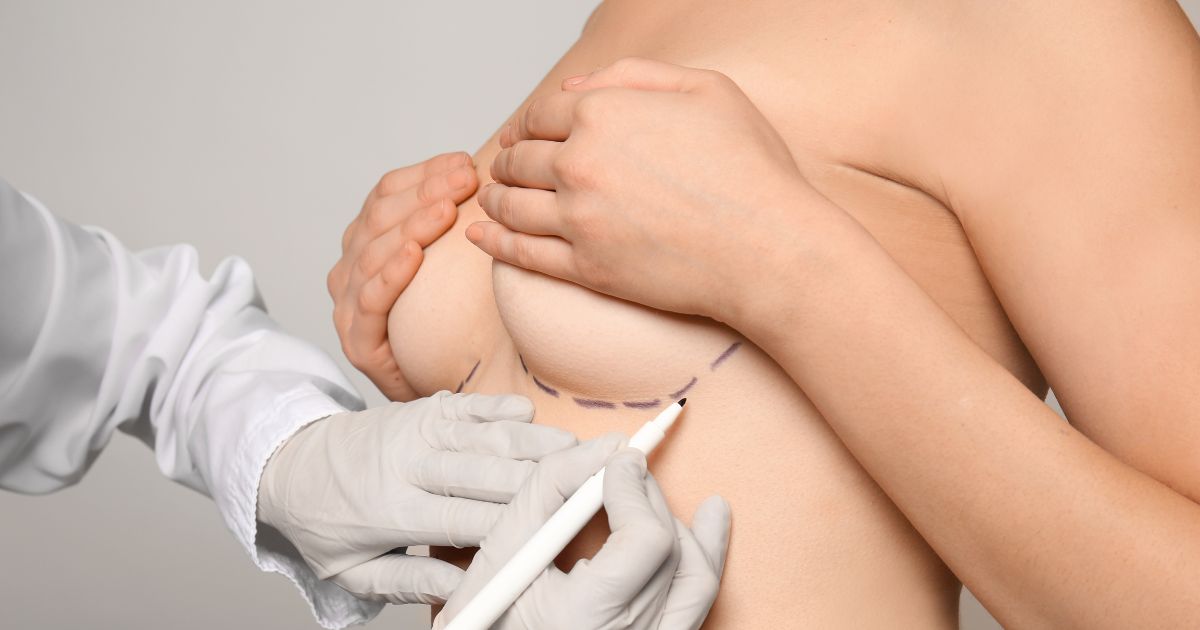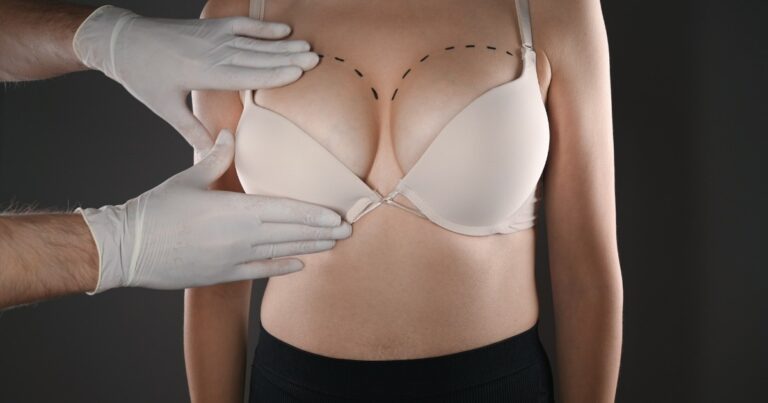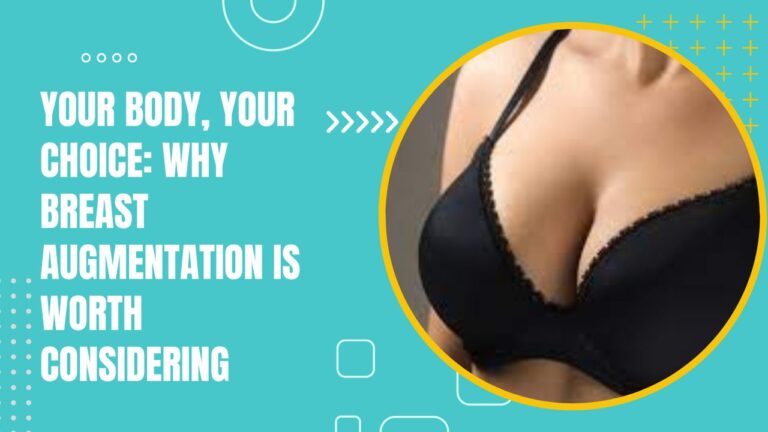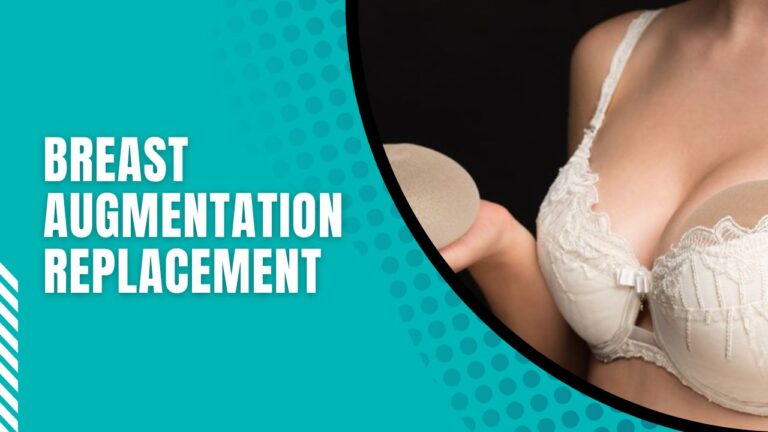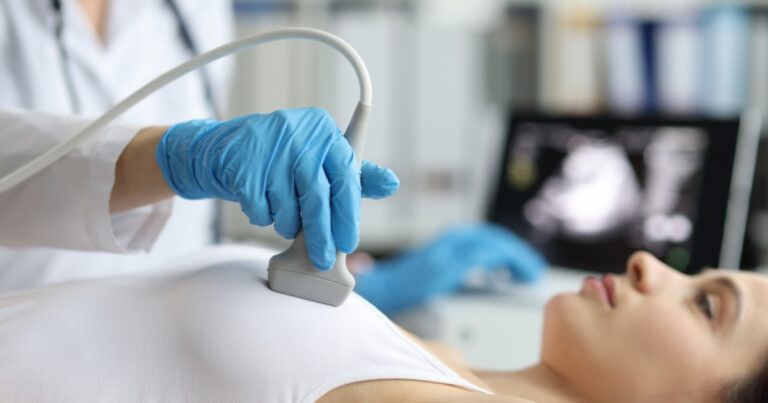Breast augmentation is a common operation that helps women achieve their ideal breast size, contour, and symmetry. While it is relatively safe, it may still cause some side effects similar to surgical procedures. Patients often worry about how their scars will look after the treatment.
This article will dive into breast augmentation scarring, what to expect, and how to minimise its appearance.
What is Breast Augmentation Scarring?
Breast augmentation is a surgical operation that can improve a woman’s breast size, shape, and breast lift symmetry by using implants or her fat.
A Breast Augmentation Expert is a doctor who specializes in making people’s chests bigger through surgery. they help those who want to increase their bosom size for personal reasons.
Book A Consultation With Dr Tarek Bayazid
Top-rated Plastic Surgeon For Breast Augmentation in Dubai
Installment Plan Available
Types of Breast Augmentation
Adding implants or fat grafting to a woman’s breasts is considered breast augmentation, often known as mammoplasty. Breast augmentation can be one of two main varieties:
Breast augmentation with implants is inserting silicone or saline salves beneath the breast tissue or chest muscle.
Fat transfer Breast augmentation includes the transfer of fat from one area of the body (often the abdomen or thighs) to the breasts.
Reasons for Getting Breast Augmentation Scarring
A woman’s breasts can be augmented, also known as breast implant surgery, by increasing their size and altering their shape during this cosmetic surgery.
Among the many possible motivations for women to pursue breast augmentation are:
Boosting bust volume and size
The presence of small or flat breasts tends to affect many women’s self-esteem and confidence. Augmentation of a woman’s breasts can result in a more feminine, proportioned figure by increasing their size and fullness.
Restoring breast shape and fullness after pregnancy, breastfeeding, or weight loss
Pregnancy, breastfeeding, and significant weight loss can cause the breasts to lose volume and shape, leading to sagging and drooping. It is a procedure that increases a woman’s breast size and fullness, rendering her more feminine and proportionate.
Correcting asymmetry or unevenness in the breasts
Many women have asymmetrical breasts, with one breast being larger or shaped differently than the other. Breast augmentation can help correct this issue, creating a more balanced and symmetrical appearance.
Reconstructing breasts after mastectomy or injury
Surgically removing one or both breasts may be necessary due to cancer, injury, or other medical conditions. Breast augmentation can help reconstruct the breasts, allowing women to regain their femininity and self-confidence after a traumatic experience.
Scarring from Breast Augmentation
Some women may experience scarring from a previous breast augmentation procedure. Revision breast augmentation surgery can help correct the appearance of scars and improve the overall appearance of the breasts.
Women who aren’t satisfied with their breast size, shape, or symmetry may find relief through breast augmentation. But before deciding, it’s crucial to know what to expect from the surgery and weigh the dangers against the benefits. Consult a board-certified plastic surgeon about your concerns and desired outcomes before choosing if breast augmentation is right for you.
Factors Influencing Scarring
Several variables affect how much and how scars form after breast augmentation.
Types of Scars
Three main types of scars can develop following breast augmentation surgery:
Hypertrophic Scars
These raised, red scars typically form within the boundaries of the original incision. They can be itchy and uncomfortable but usually fade over time.
Keloid Scars
Keloids are thick, raised scars extending beyond the initial incision’s boundaries. They can be painful, itchy, and challenging to treat.
Atrophic Scars
Atrophic scars are indented or depressed below the surrounding skin level. They are less common in breast augmentation surgery but can still occur. Dubai’s Elite Skin Clinic is a special place where experts help people improve their skin. They use advanced treatments to make your skin look its best.
Breast augmentation 300cc enhancement is a surgery to make breasts bigger by adding 300cc of implants to them it helps people feel more confident about their appearance Breast implants waviness can happen when the implant moves or shifts under the skin making the breast look uneven or rippled this effect is more noticeable in women with thin skin or little natural breast tissue
Surgeon’s Skill and Technique
Choosing a skilled and experienced surgeon reduces the risk of excessive scarring. A reputable surgeon will utilise precise techniques and choose the most appropriate incision location based on your unique anatomy and desired outcome.
Proper Incision Care
Following your surgeon’s post-operative care instructions is essential for minimising scarring. This includes keeping the incision clean, avoiding heavy lifting or strenuous activities, and wearing a supportive bra as directed.
Scar Management Products
Several products can help reduce the appearance of scars, such as silicone gel sheets, topical creams, and pressure garments. Discussing these options with your surgeon is essential to determine the most suitable for your needs.
When to Seek Medical Attention
It’s crucial to watch your incisions during the healing process.:Discover certain symptoms that may necessitate an urgent consultation with your physician.
Scarring after breast augmentation surgery is inevitable, but the degree to which it occurs can vary. By choosing a skilled surgeon, following proper post-operative care, and utilising scar management products, you can significantly reduce the visibility of scarring. Consult your surgeon if you are concerned about your recovery or scars.
Managing scarring after breast augmentation is crucial for achieving the best possible results. If you’re considering breast augmentation scarring and want minimal scarring, Dr Tarek Bayazid is here to help. From your first consultation to your recuperation, our staff is here to guide you through every stage of the breast augmentation process.
Don’t hesitate to request a quote and take the first step towards your aesthetic goals today.
